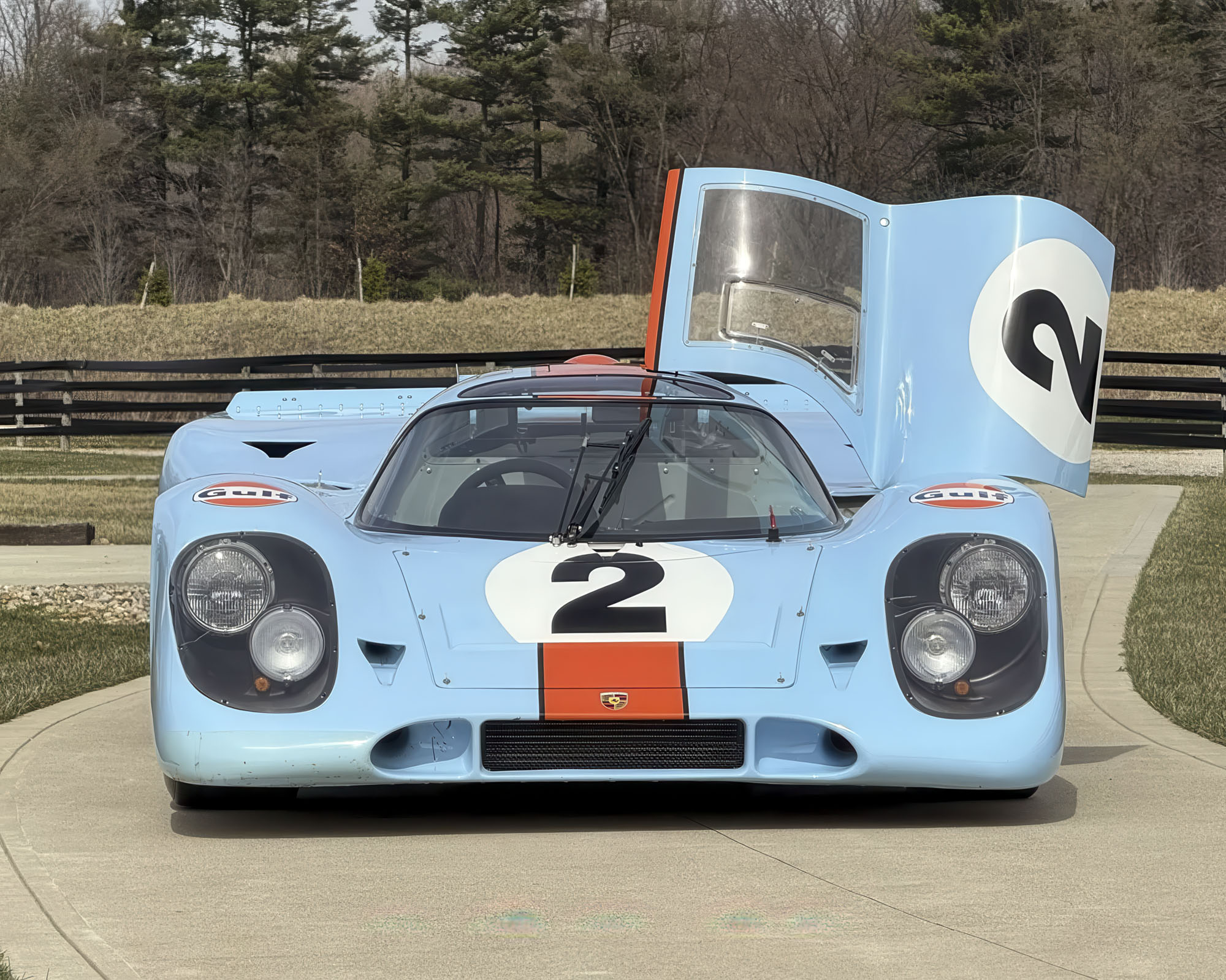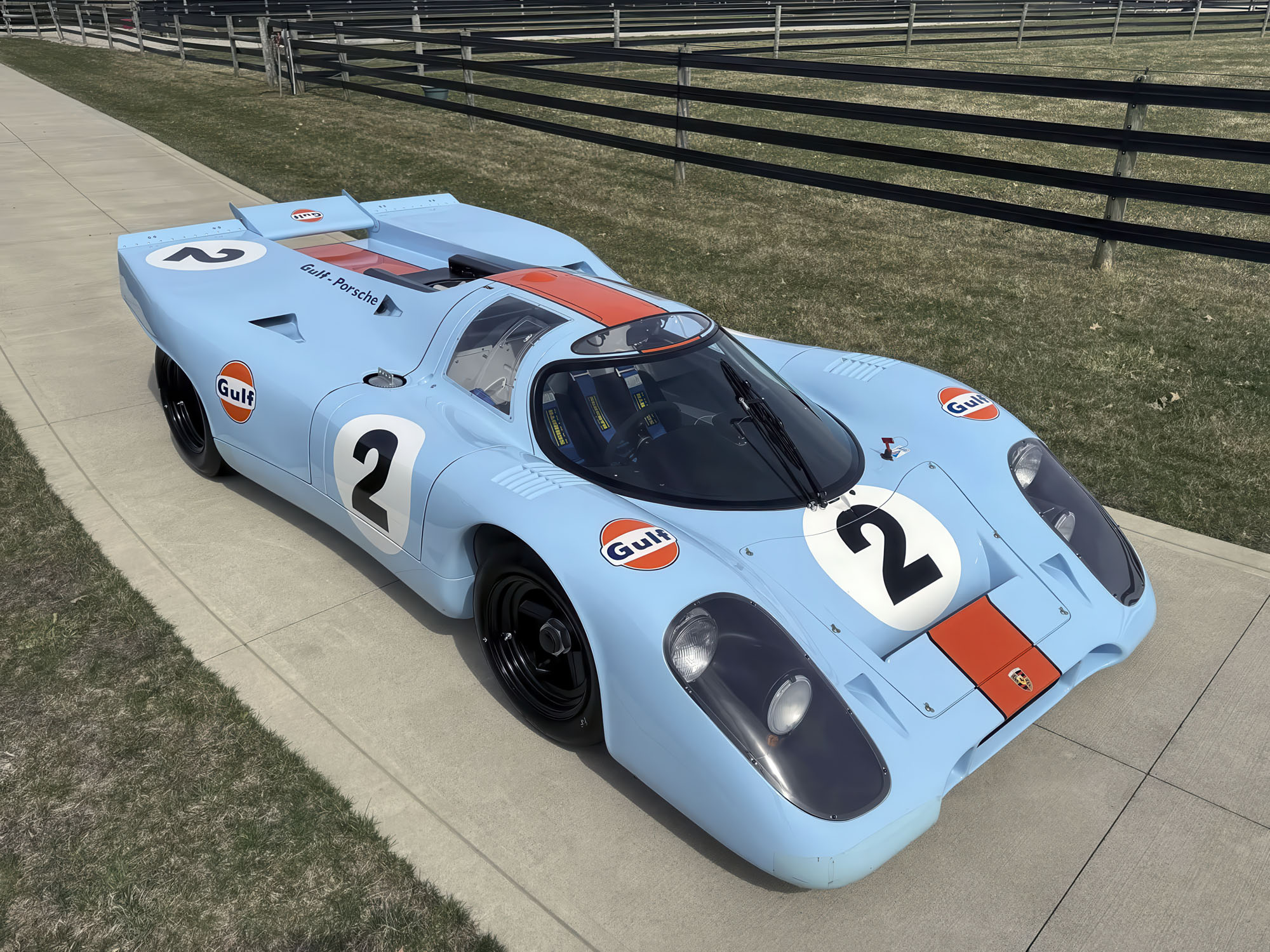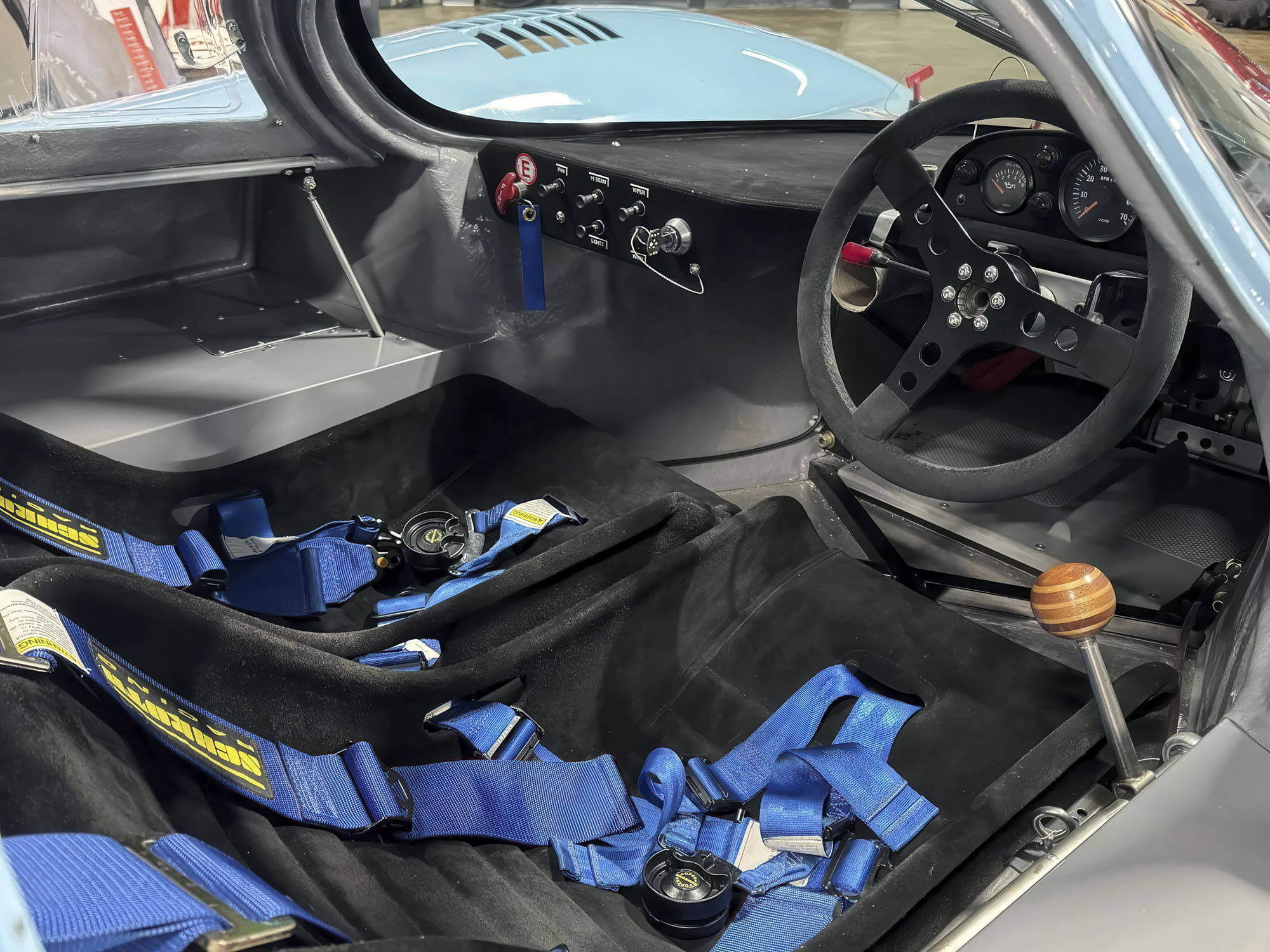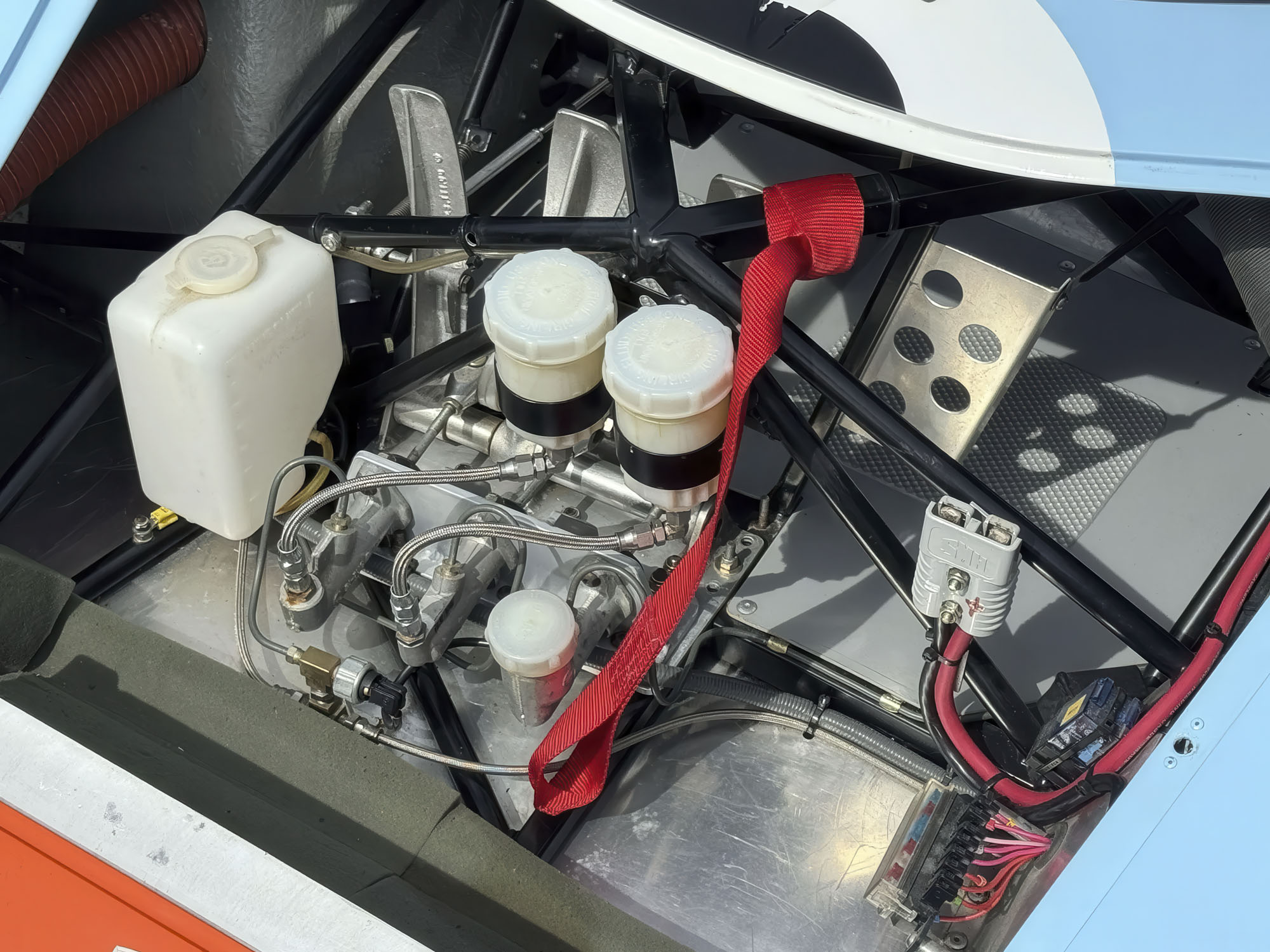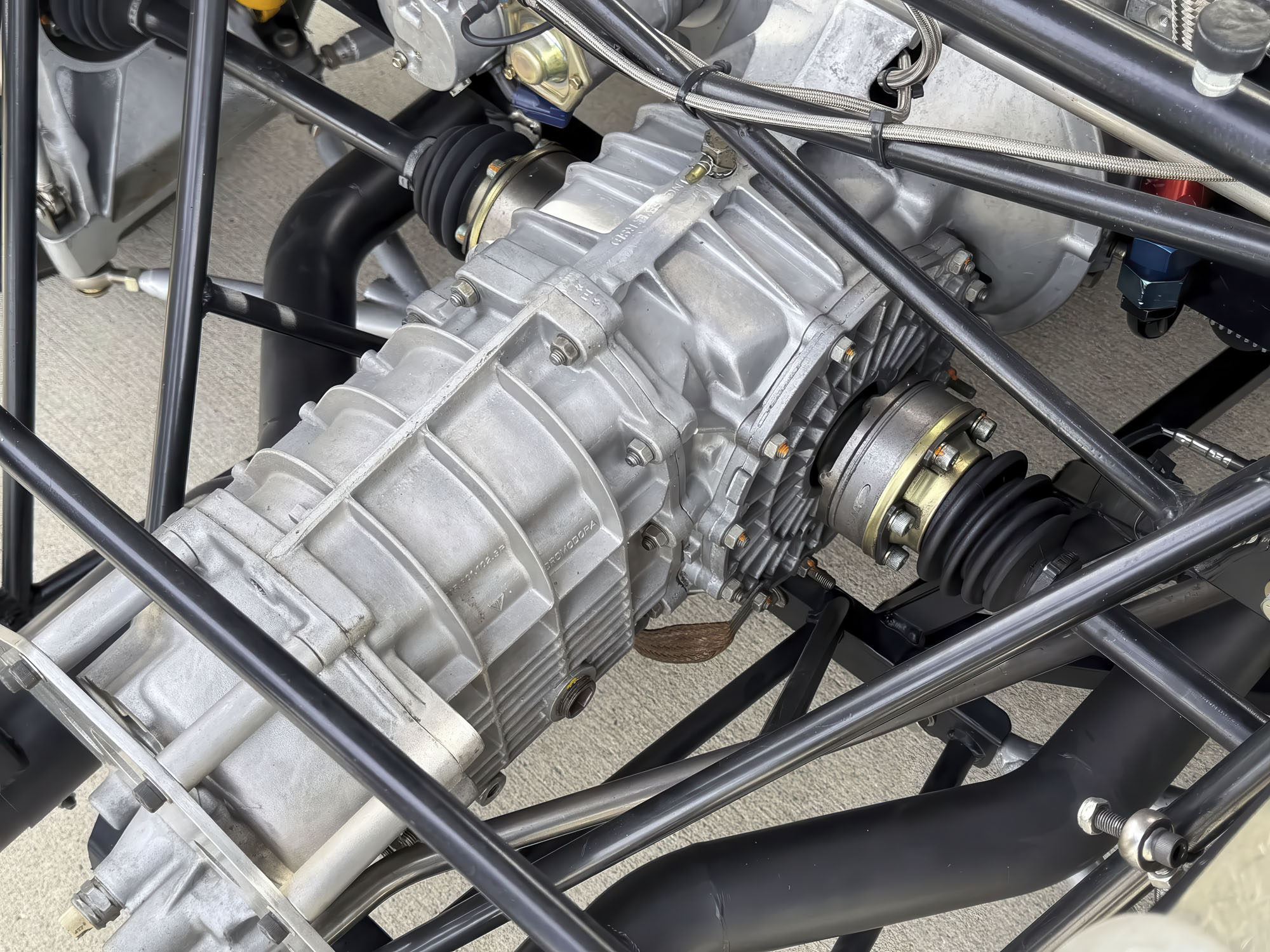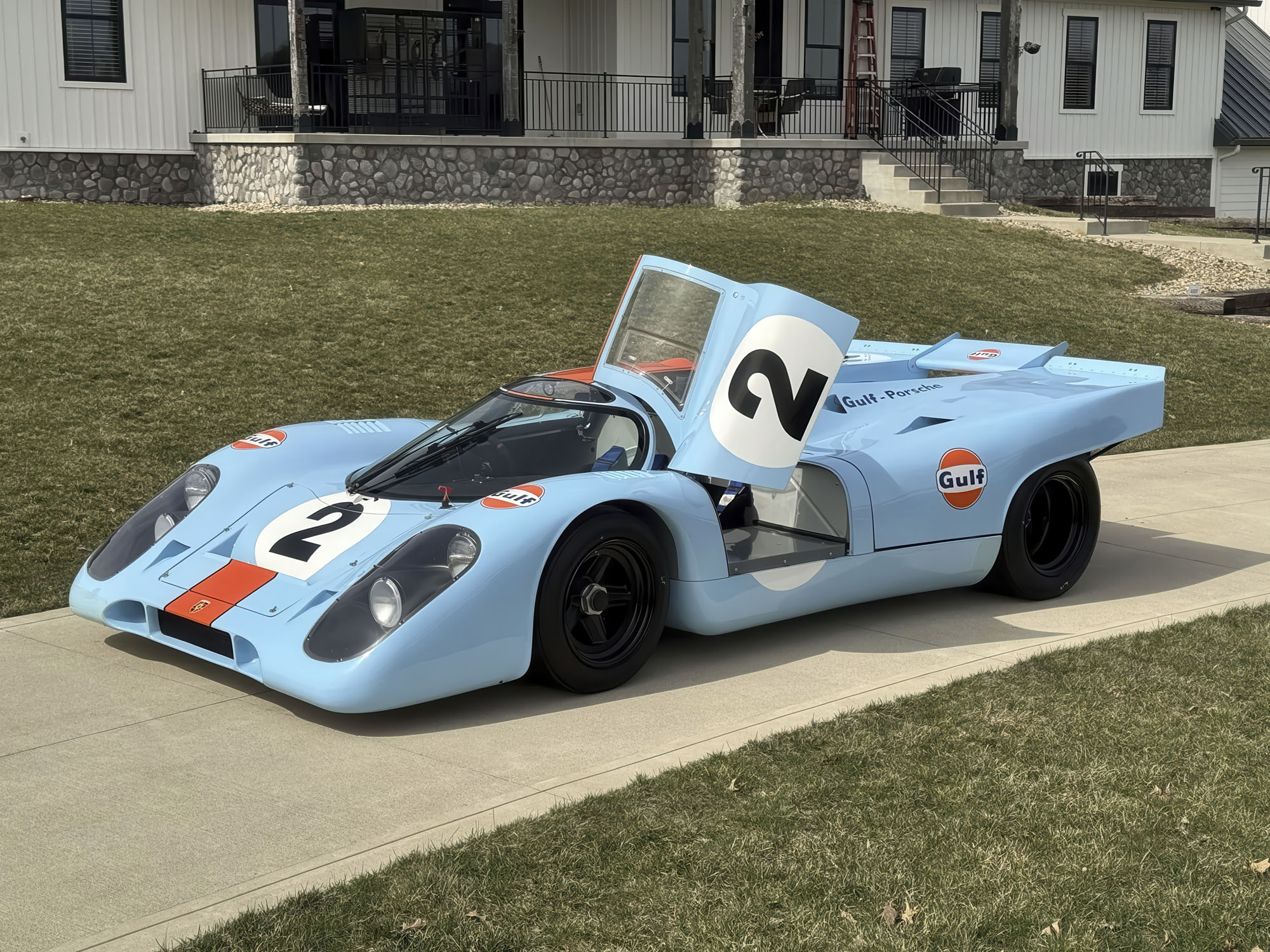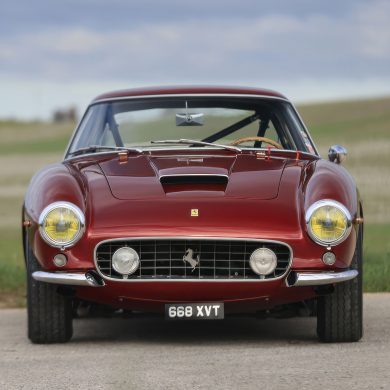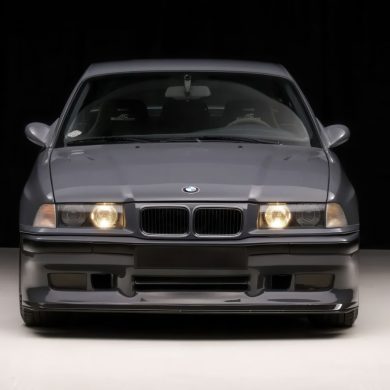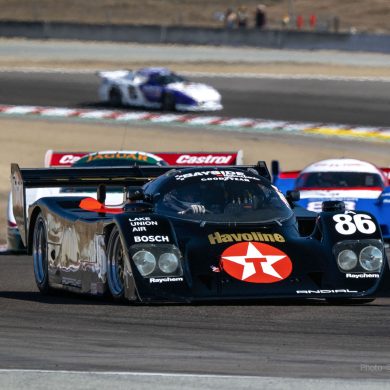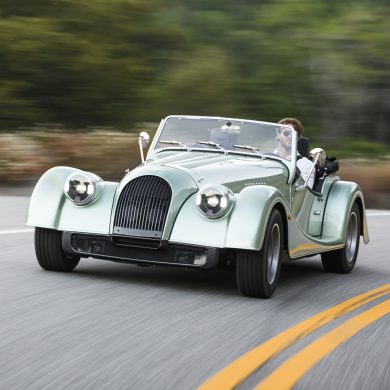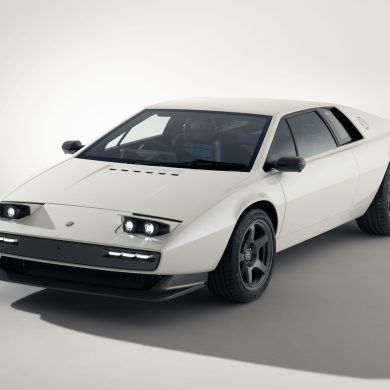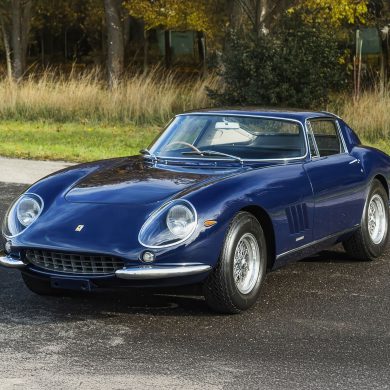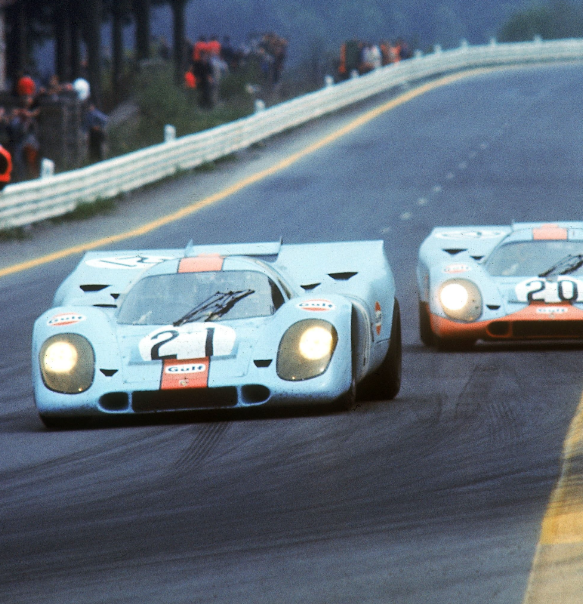Background
The original 917 was developed by Porsche beginning in 1968 in anticipation of changes to FIA homologation rules allowing low-production prototypes to contest the 5.0-liter class of World Sports Car Championship competition. The flat-12-powered 917 claimed back-to-back victories at Le Mans while helping Porsche claim the 1970 and 1971 International Championship of Makes titles.
Modern Day Creation
This LMK 917 is a re-creation of a Porsche 917K that was constructed by Andrew Keiller’s Kraftwerkz in Woodend, Australia, in 2004 before being delivered to its commissioning owner in Maine. After its arrival in the US, chassis LMK005 was completed with the installation of a Jerry Woods-built 3.8-liter Porsche Type M64 flat-six featuring fuel injection with individual throttle bodies and Electromotive TEC3 engine management with twin-plug ignition.
Iconic Gulf Livery
Once completed, the car is said to have been utilized for track days before being sold by its original owner in 2010 to the selling dealer, who has since retained it in his collection. Based on a steel tube frame, the car features carbon-fiber bodywork finished in a pale blue and orange Gulf livery.
Details
Additional equipment includes a Type 915 five-speed manual transaxle, AP Racing cross-drilled and ventilated disc brakes with dual master cylinders, coil-over shock absorbers, staggered-width 15” alloy wheels, a horizontal electric cooling fan, a Fuel Safe fuel cell, fixed-back bucket seats trimmed in black cloth, six-point harnesses, and a layered-wood shift knob. This LMK 917 is now offered in Sunbury, Ohio, with invoices and correspondence from its construction, an LMK 917 owner’s manual, a tail stand, and a bill of sale.
Down Under Wonder
In the mid-1990s, Australian aeronautical engineer Andrew Keiller set out to design a 917 short-tail re-creation based on factory drawings and began delivering LMK 917 chassis under the Kraftwerkz name, which was later changed to Werkzcars and then LMK917.
The LMK 917 model was constructed over a steel tubular frame in lieu of the original 917’s aluminum substructure, although aluminum was utilized for the LMK 917’s door frames and rear-body support structure. Fiberglass body panels include front and rear sections bonded to the chassis as well as a lift-off rear section and a removable nose panel. The car is finished in a number-2 Gulf livery replicating that worn by the 1970 Daytona 24 Hour-winning 917, which featured a transom window above the wraparound windshield that is also reproduced on this example. Additional features include forward-hinged doors, faired-in headlights, NACA ducts on the nose and rear flanks, hinged Gurney flaps on each side of the tail panel, and a central rear wing element.
Wheels, Tires and Brakes
The LMK 917’s 15×10” and 15×15” peg-drive aluminum wheels were reportedly cast from original 917 wheels and are secured by hexagonal nuts. Dunlop Racing tires are mounted at each corner. Stopping is handled by disc brakes with AP Racing calipers, cross-drilled and ventilated rotors, and dual master cylinders with a balance bar. The brake fluid is said to have been bled in March 2025.
Flight Deck
The right-hand-drive cockpit houses a pair of fiberglass bucket seats that were reportedly molded from an original 917 seat and are trimmed in black cloth, while the LMK 917’s pedals are also said to have been cast from original components. Equipment includes blue Schroth six-point harnesses, a cooling duct, an aluminum rear bulkhead, and a right-hand shifter with a layered wood shift knob.
The three-spoke steering wheel sits ahead of VDO gauges including a 7k-rpm tachometer flanked by gauges monitoring oil pressure and fuel level. The car is not equipped with an odometer, and mileage is unknown.
Flat-six Mill
The Type M64-based flat-six was overhauled by Jerry Woods Porsche Engines in Campbell, California, to a displacement of 3.8 liters with components including JWE racing pistons, RSR cylinders, JWE valve springs, and TWM individual throttle bodies. The engine was prepared and dynamometer tested by Kevin Buckley of The Racers Group (TRG) in Sonoma, California, with Clewett Engineering Electromotive TEC3 engine management featuring twin-plug crank-fire ignition. An electric cooling fan is positioned horizontally over the engine. Service in March 2025 is said to have included an oil change and the replacement of the battery.
The Porsche Type 915 five-speed manual transaxle was modified with reversed gearing for placement behind the engine and features short first, second, and fifth gears along with a Tilton clutch. Suspension incorporates double-wishbones up front and upper links, reverse lower wishbones, and trailing arms at the rear. Spherical rod ends, adjustable coilover shock absorbers, and anti-roll bars are present at front and rear.
Photos and correspondence from the car’s build are included in the sale, as are invoices and dynamometer sheets from the engine build. The car does not have a title or registration, as it is intended for track use only. It is being sold on a bill of sale.
Auction Info
Go HERE


